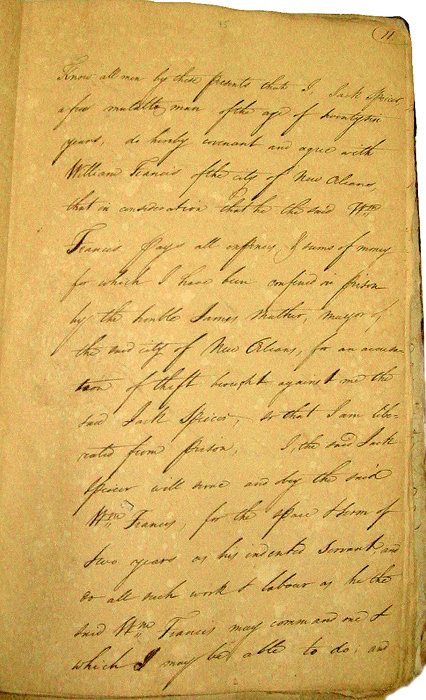
| |||
| Return to Table of Contents Go to Page [1] [2] [3] [4] [5] [6] [7] [8] [9] [10] [11] [12] [13] [14] [15] [16] [17] [18] [19] [20] [21] [22] [23] [24] [25] [26] [27] [28] [29] [30] [31] [32] [33] [34] [35] [36] [37] [38] [39] [40] [41] [42] [43] [44] [45] [46] [47] [48] [49] [50] [51] | |||
PAGE 38
| In this indenture document, signed
before
Mayor James Mather in July, 1811, Jack Spicer, a free mulatto man of 26, agreed to bind himself to William
Francis as his indentured servant for a period of two years. In return, Francis, who had had Spicer
imprisoned on a charge of theft, agreed to pay all expenses necessary to free Spicer from jail. The two men
also agreed that if Spicer violated the agreement before the two years are up, his term of service would
double.
| The majority of indentures signed before the Mayor were not like this one. Most were apprentice agreements, contracts in which young people were bound legally to an employer for a period of time in order learn a trade or skill. Many of the apprentices (and employers) were free people of color, many of them natives of St. Dominque, sons of French-speaking colonials who had fled the slave revolt there and settled first in Cuba, and then in New Orleans.
Interestingly, affixed to this document is perhaps the earliest instance of the New Orleans city seal, still in
use today. Next page of
this
document
| 
|